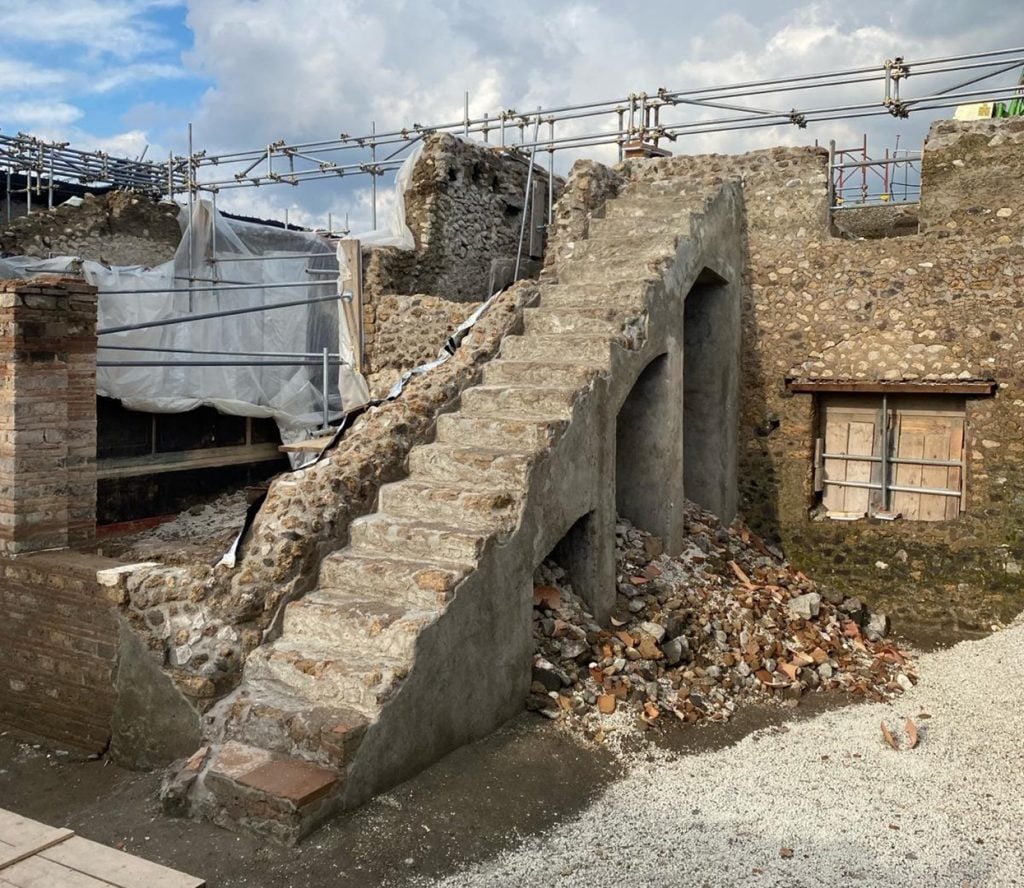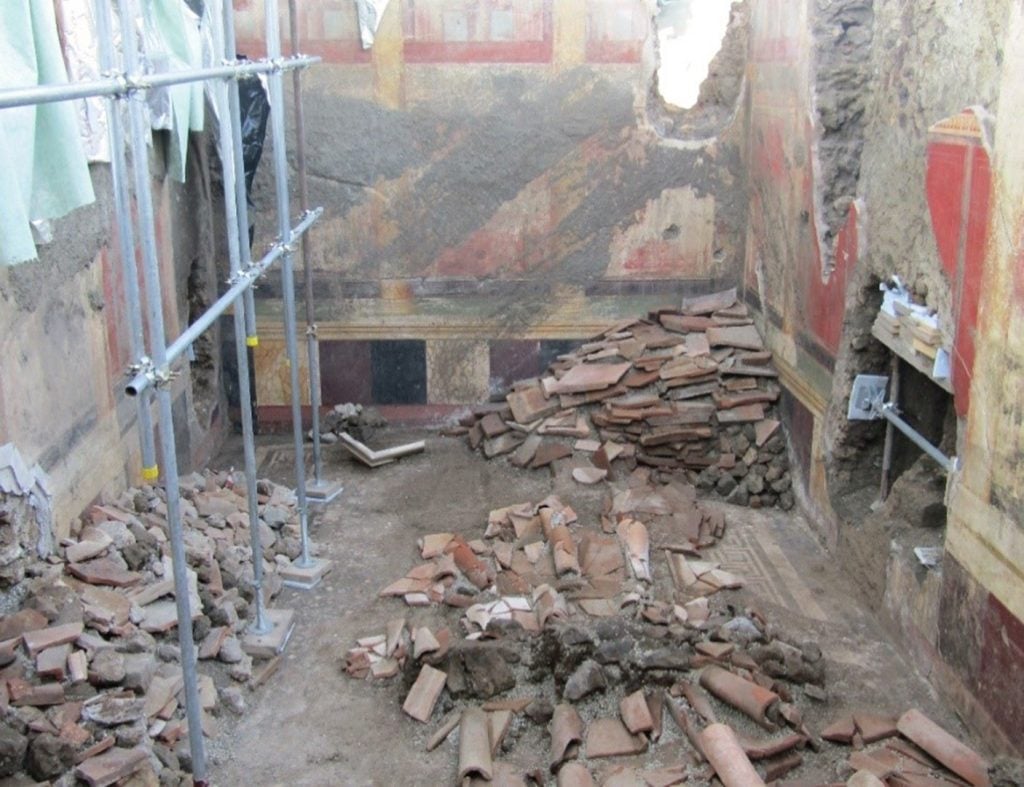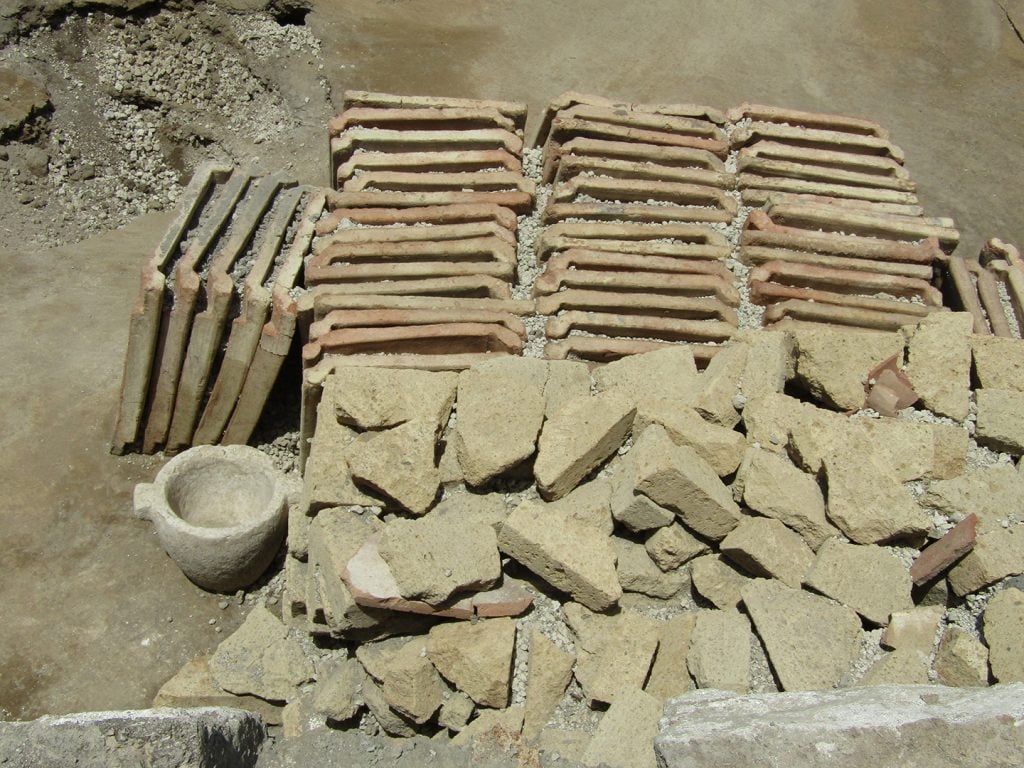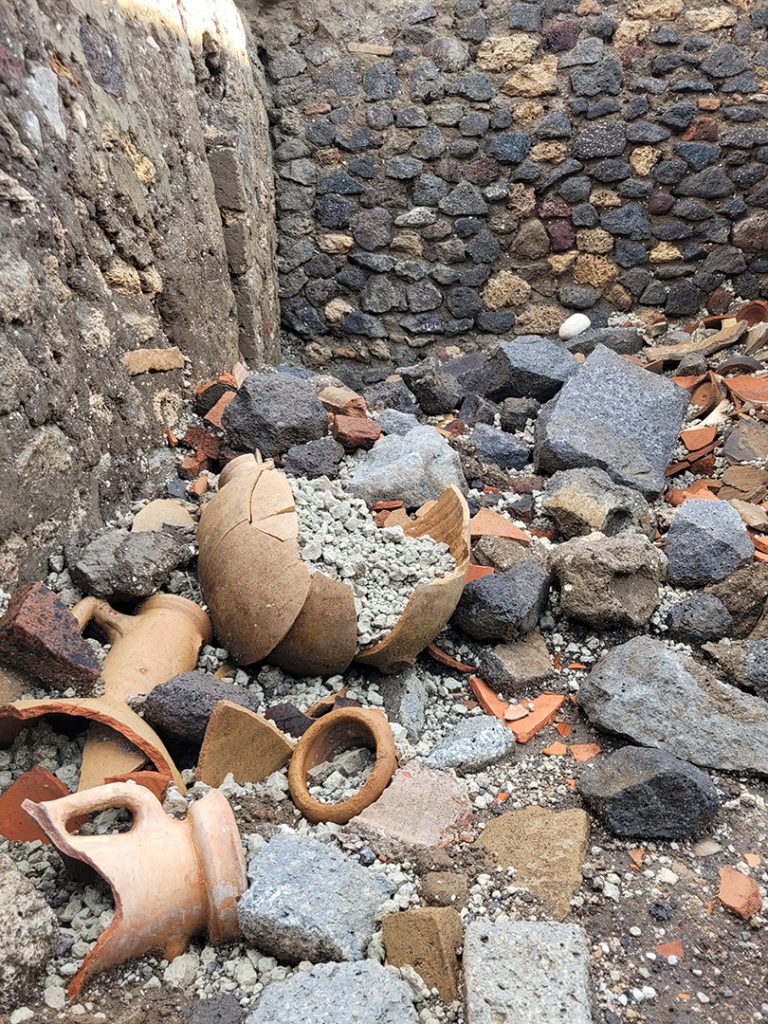Archaeology & History
An Ancient Construction Site, Complete With Cement Recipe, Is Discovered in Pompeii
The find offers insights into the building techniques used in ancient Rome.

Archaeologists undertaking excavations on Insula 10 (Regio IX)—a central area of the city of Pompeii—have discovered an ancient Roman construction site.
The discovery is significant for our understanding of building techniques used in ancient Rome, said Gabriel Zuchtriegel, director for the Archeological Park of Pompeii. These excavations are “yet another example of how the small city of Pompeii makes us understand so many things about the great Roman Empire, not least the use of cement.”
In the Ministero della Cultura press release which was published on March 25, Zuchtriegel added: “Without cement, we would have neither the Colosseum, nor the Pantheon, nor the Baths of Caracalla. The excavations currently underway in Pompeii offer an opportunity to observe almost live how an ancient building site functioned.”

Excavated construction site in Pompeii, 2024. Photo courtesy of MiC Press and Communication Office.
Pompeii was buried beneath four to six meters of volcanic ash after Mount Vesuvius erupted in 79 C.E., killing more than 2,000 people. The city was rediscovered in the 16th century and has been the site of major archaeological excavations since the 18th century. The site was opened as an open-air museum in 1874 and the Archaeological Park of Pompeii became a UNESCO World Heritage Site in 1997. Pompeii now welcomes around 2.5 million tourists per year.
This new research into the ancient construction site in Pompeii was undertaken by Pompeii Archaeological Park and a team of researchers from Massachusetts Institute of Technology (MIT). The Italian Minister of Culture, Gennaro Sangiuliano, said: “I was very pleased when the director of the archaeological park, Gabriel Zuchtriegel, reminded us that never before have so many excavations been active on the site: we can say that this is a record for the last few decades.”

Excavated pottery in Pompeii, 2024. Photo courtesy of MiC Press and Communication Office.
The construction site is believed to have been active at the time of the eruption, with tools, piles of lime, and bricks lying where they would have been around 1 p.m. on August 24 when the eruption began. Construction tools were found including amphorae (tall two-handled jugs) used in the process of creating plaster and cement out of lime, lead weights, and iron hoes.
The construction site would have served the local businesses and buildings of the insula block. A nearby bakery—where a mural of a focaccia and glass of wine was also recently discovered—seemed to have in-progress building work underway, with construction materials piled up in its atrium. In a statement on the discoveries, researchers suggested that the “entire block” was undergoing “extensive renovation works” at the time of the eruption. Zuchtriegel said that these renovations were potentially occurring following “seismic tremors that struck the city” after a major earthquake that occurred in 62 C.E.

Excavated pottery in Pompeii, 2024. Photo courtesy of MiC Press and Communication Office.
A major discovery of the excavation was the ancient use of “hot mixing,” where quicklime was first mixed with pozzolanic sand before being mixed (“slaked”) with water in an amphorae to create a concrete. This would have meant that the mixture was still hot when being used to construct walls due to a thermal reaction, which would have shortened the drying time.
“We are forming a network between research institutions to study the building know-how of the ancient Romans. Maybe we can learn from them [and] think about sustainability and reuse of materials,” said Zuchtriegel.





